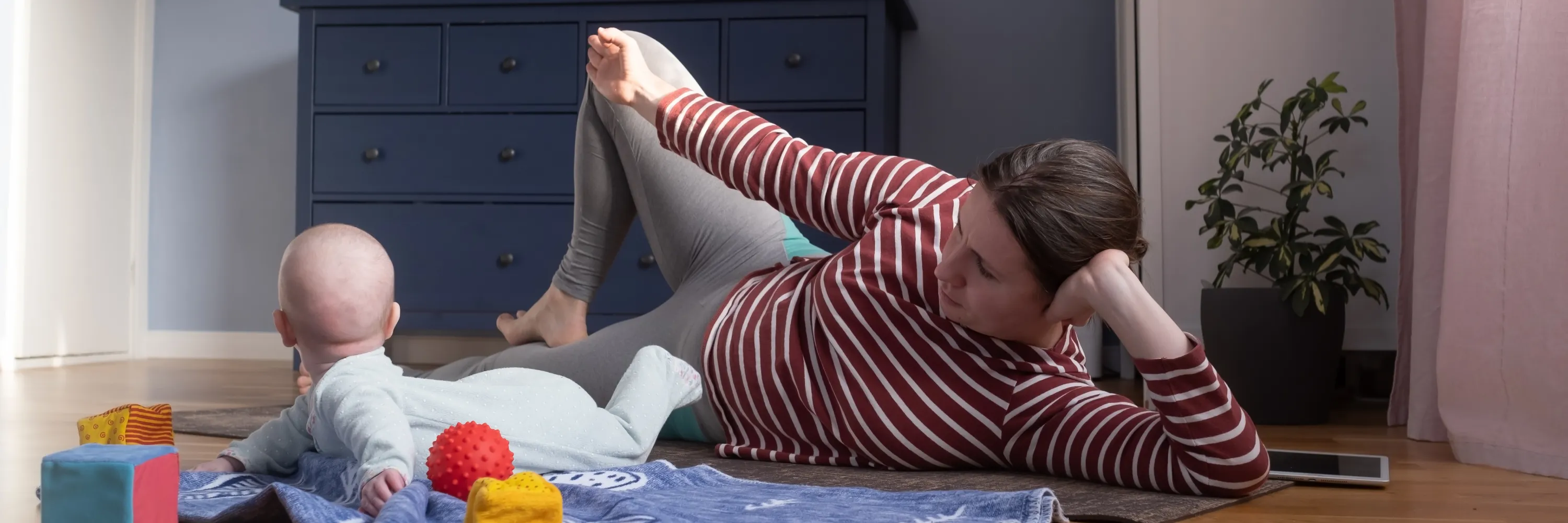Parenting often means trading gym time for school runs, snack duty, and bedtime routines. But here’s some good news: the playground, living room floor, or backyard can double as a movement opportunity for you, too.
This isn’t about squeezing in a “workout.” It’s about blending natural, functional movement into the moments you already share with your kids—so you feel better, stay mobile, and model an active lifestyle without adding more to your calendar.
Why Movement During Playtime Matters
Most adults spend long hours sitting—commuting, working, supervising. Add the demands of parenting, and movement often drops to near zero outside of structured workouts (if those even happen). Over time, this can lead to:
- Reduced hip and shoulder mobility
- Core weakness and poor posture
- Lower energy and stiffness
Meanwhile, kids thrive when parents join in. Engaging actively during play helps them see movement as fun—not a chore—while giving you a chance to restore some of the mobility patterns that adult life tends to erase.
Where to Find Movement Opportunities
Every play setting—floor time, playgrounds, parks—offers ways to sneak in movement without pulling focus from your kids. Here’s how to make the most of those moments.
1. Floor Time = Hip and Core Work
When your child is building blocks, coloring, or setting up a game, you can do more than just sit on the couch. Try these simple positions and transitions:
- 90/90 Hip Switch
Sit with one leg bent in front and the other behind. Hold for 20–30 seconds, then switch sides. Repeat 3–4 times.
Why: Supports hip rotation and pelvic control. - Bear Crawl Hold & Shift
From hands and knees, lift your knees an inch off the floor. Hold 10–15 seconds, then gently shift forward, back, and side to side.
Why: Builds core stability and shoulder strength. - Side-Lying Windmill
Lying on one side, sweep your top arm across and open your chest toward the ceiling. Repeat 6–8 times per side.
Why: Encourages spinal rotation and thoracic mobility. - Spiral Reach
From a seated position, twist gently to one side and reach your arm up and across, then return to center.
Why: Adds gentle spinal rotation and ribcage mobility.
Tip: Use a folded blanket or cushion if sitting on the floor feels uncomfortable.
2. Playground Pushes and Pulls
Playground time is perfect for adding natural strength and mobility work:
- Swing Push Squats
While pushing your child on a swing, add a mini squat between pushes.
Why: Reinforces lower-body strength and posture without extra equipment. - Hanging Hold (If a Bar Is Available)
Grip a low bar or monkey bar and gently hang with feet supported or lightly off the ground.- Try 10–20 seconds, 2–3 rounds.
Why: Helps shoulder mobility and grip strength.
- Step-Up on a Low Platform
Use a sturdy step or play structure.- Try 8–10 per side, moving slowly for balance.
Why: Adds single-leg strength and stability.
3. Chasing Games for Agility and Fun
Tag, hide-and-seek, or backyard obstacle courses aren’t just for kids—they’re a chance to add multidirectional movement for you, too.
- Use soft turns and stay playful, not competitive.
- Alternate sprints with walking to keep it light.
- Let your child set the pace so it stays fun and low-pressure.
Why: Changing direction and moving in multiple planes supports balance, coordination, and reactivity.
4. Micro-Movements While Supervising
Even if you’re standing and watching, you can still move.
- Shift into a split stance instead of standing still.
- Do gentle hip circles or ankle rocks.
- Try standing calf raises while chatting with another parent.
Small, subtle patterns help maintain mobility without making it feel like a workout session.
Two Sample “Playtime Flows”
Here are two short, environment-specific examples you can use as inspiration:
Indoor Floor Play (Approx. 8–10 Minutes)
- 90/90 Switch – 30 seconds per side
- Bear Crawl Hold & Shift – 2 × 20 seconds
- Side-Lying Windmill – 6 reps per side
- Spiral Reach – 5 reps each side
Outdoor Playground Flow (Approx. 8–10 Minutes)
- Swing Push Squats – 2 × 10 reps
- Hanging Hold – 2 × 15 seconds
- Step-Ups on Play Structure – 8 per side
- Short Chase Game – 30–60 seconds, light pace
5 Quick Wins to Try Anytime
- Sit on the floor instead of the couch during play.
- Squat down to your child’s level rather than bending from your back.
- Carry your child in different positions to add variability to your load.
- Use park benches for a quick hip opener or supported squat while supervising.
- Crawl through tunnels or obstacle courses alongside your child for bonus mobility.
Final Thoughts
Playtime can be a shared experience that supports both your child’s development and your own movement health. Start small: one floor sit, one crawl, one hang. Let the play guide you—and let those natural patterns remind your body what it’s built to do.
For more parenting mobility ideas, check out:
